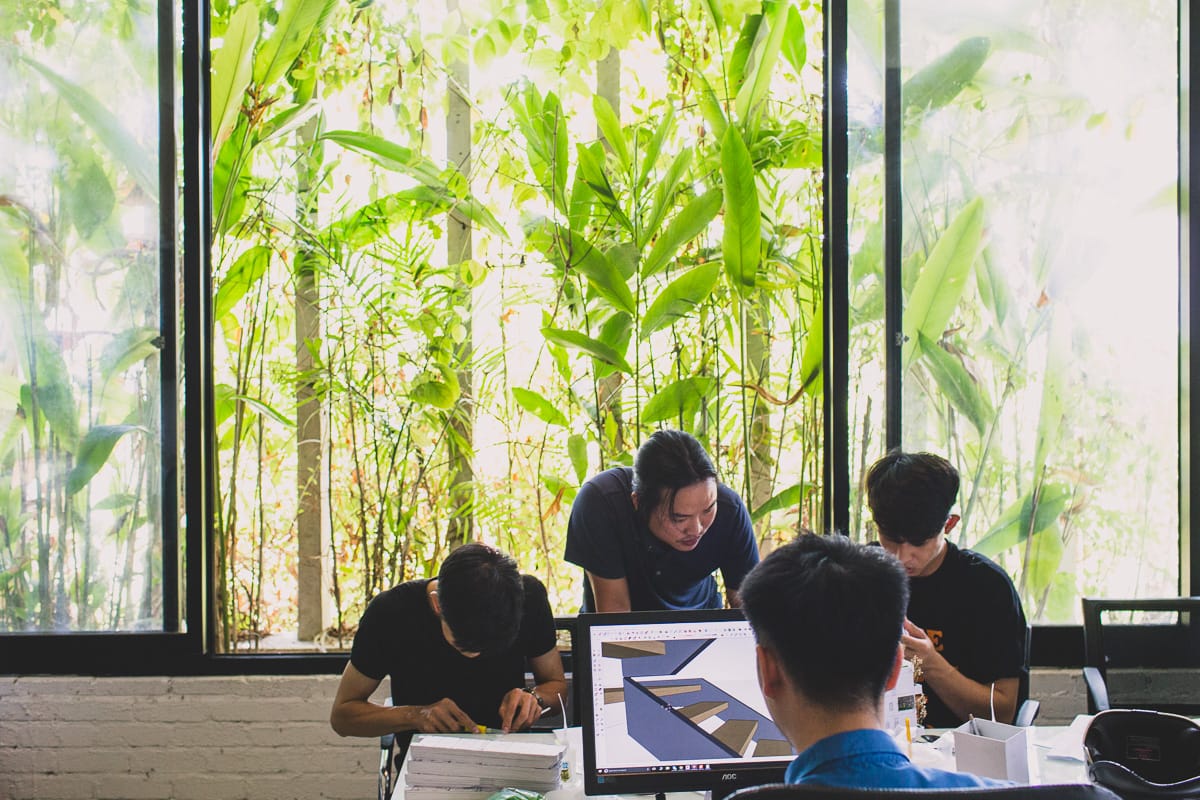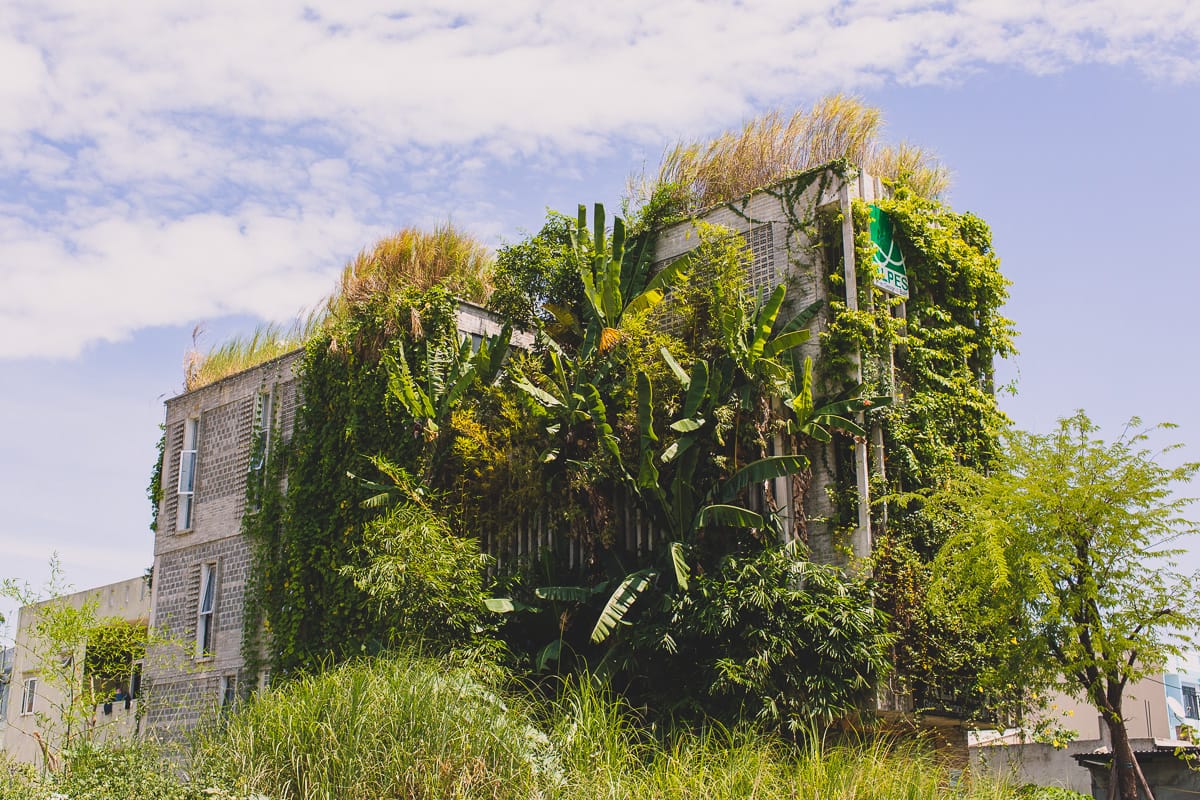Alpes Green Design and Build’s signature Danang project, The Modern Village Office, was recently commended by the Futurarc Green Leadership Awards 2018.
Alpes Green Design and Build are a Danang-based architect firm, led by CEO and chief architect Mr. Ho Khue, and the building is both home to the Alpes’ architecture team and a shining example of the green building philosophy Ho Khue is dedicated to.
Green building is a term referring to accreditation for environmentally and socially responsible design and building practices. The international standards are set by the US Green Building Council through their LEED, or Leadership in Energy and Environmental Design rating system.
So we met with Mr. Ho Khue to discover his plans to bring green building into the mainstream of Vietnamese architectural design.

What is your background, and why did you become an architect?
Art was something that I really enjoyed growing up, and this led me to study at the Ho Chi Minh City University of Architecture. I come from a large family, I’m the youngest of 12 children and the first person in my family to attend university.
In 2005, Ms. Nguyen Bac Vu and I founded Ardor Architects. We specialized in high-rise buildings and BCI Asia placed us in the top ten architectural firms in the region in 2010. I had the opportunity to design more than 100 high-rise buildings while working at Ardor. It really helped me to develop expertize in this field.

How would you describe Alpes Green Design and Build’s signature style?
Our signature style is a blend of traditional, modern, and green elements combined in the most effective way possible. For me, the first thing is the environment, and second is the people. We aim to connect the two.
It is also important to consider the surrounding environment when designing. I want to bring the outdoors indoors and create a green environment as well as having respect for the existing surroundings. One way to achieve this was to move the trees that were on the grounds rather than cutting them down.

Who are your architectural influences and what inspires you?
New York-based Daniel Libeskind inspires me because of his approach blending old and new. When designing museums Libeskind doesn’t follow the standard form, he thinks about the culture of the people and the feelings towards the items inside the building. I always think about the humans who inhabit spaces when I design too.
Hoang Thuc Hao is a young architect from Hanoi. When he designs buildings he considers the emotions of the people and communities involved. He works with disadvantaged communities designing housing, schools, and playgrounds, prioritizing cultural sustainability in his work.
And Ms. Nguyen Bac Vu. She’s an experienced creative architect who I founded Ardor with. Her projects use technology in pioneering ways and they are energy-efficient. She is a co-founder, co-worker, and a very early teacher in my career that influenced me a lot. I am grateful for her guidance and will remember her forever.

What is the concept behind The Modern Village Office?
Over the years, I had built a good reputation in Ho Chi Minh City and was well-known. On returning to Danang, I was had to start all over again. I bought a plot of land on a tight budget and designed a small building. It’s a good working environment and somewhere nice for the clients to visit.
My goal was to create an environmentally sustainable space and a productive workspace that feels close to nature. The Modern Village Office reflects my freedom in terms of design and it represents Alpes Green Design And Build as a business.

What techniques did you use in the design and construction of The Modern Village Office to align with the concept?
The design and build incorporate many features—we spaced the concerted louvers according to the position of the sun to allow the greatest amount of diffused light into the building. They also act as a double skin, providing insulation for the building.
We used denser foliage like bamboo in more exposed areas like the rooftop to create shade and cool the upper floors, and we used lighter plants to diffuse sunlight and give color lower down.
The specific placement of bricks maximizes cross ventilation and exploits the sea breeze reducing energy costs.

Why is the green buildings movement important for Vietnam?
Vietnam is undergoing a process of rapid urbanization, so it is crucial that new developments are designed with a green philosophy. The green buildings movement prioritizes the needs of the environment and people, creating spaces that are energy-efficient, environmentally sustainable, and beautiful places to live and work.
For me, it is vital that people appreciate the building. It is important for the industry to recognize it, but even more important for local people as they are the ones that live with the buildings. It becomes part of their daily landscape.

What is the greatest challenge when it comes to green buildings?
Building trust with clients is a challenge. It’s difficult for people to visualize what a green building will look like in reality as it is so different to what they are used to. But once they see a completed building they often want another one just like it!
With green buildings, you need to consider each unique context and carefully consider all the local factors. In Vietnam, the climate varies dramatically across the country, so what works in one area will not work in another. When designing a green building you need to look at the climate, the people, and the culture to incorporate these factors into the designs.
What are your plans for the future?
Having worked on high-rise projects in Saigon I hope to design bigger and bigger buildings with Alpes Green Design and Build. Towers are like a legacy, therefore, I want to build those signature buildings using green and sustainable techniques. We started in Danang with a three-story project and are now working on a 30-story one—the Thu Thiem Green Jewel Apartment, in District 2, Ho Chi Minh City.
Related Content:
[Article] Vietnamese School Architecture: Three Creative Educational Spaces
[Video] ShapeUs Studio’s Le Ha Hoang Describes Serif’s Design
